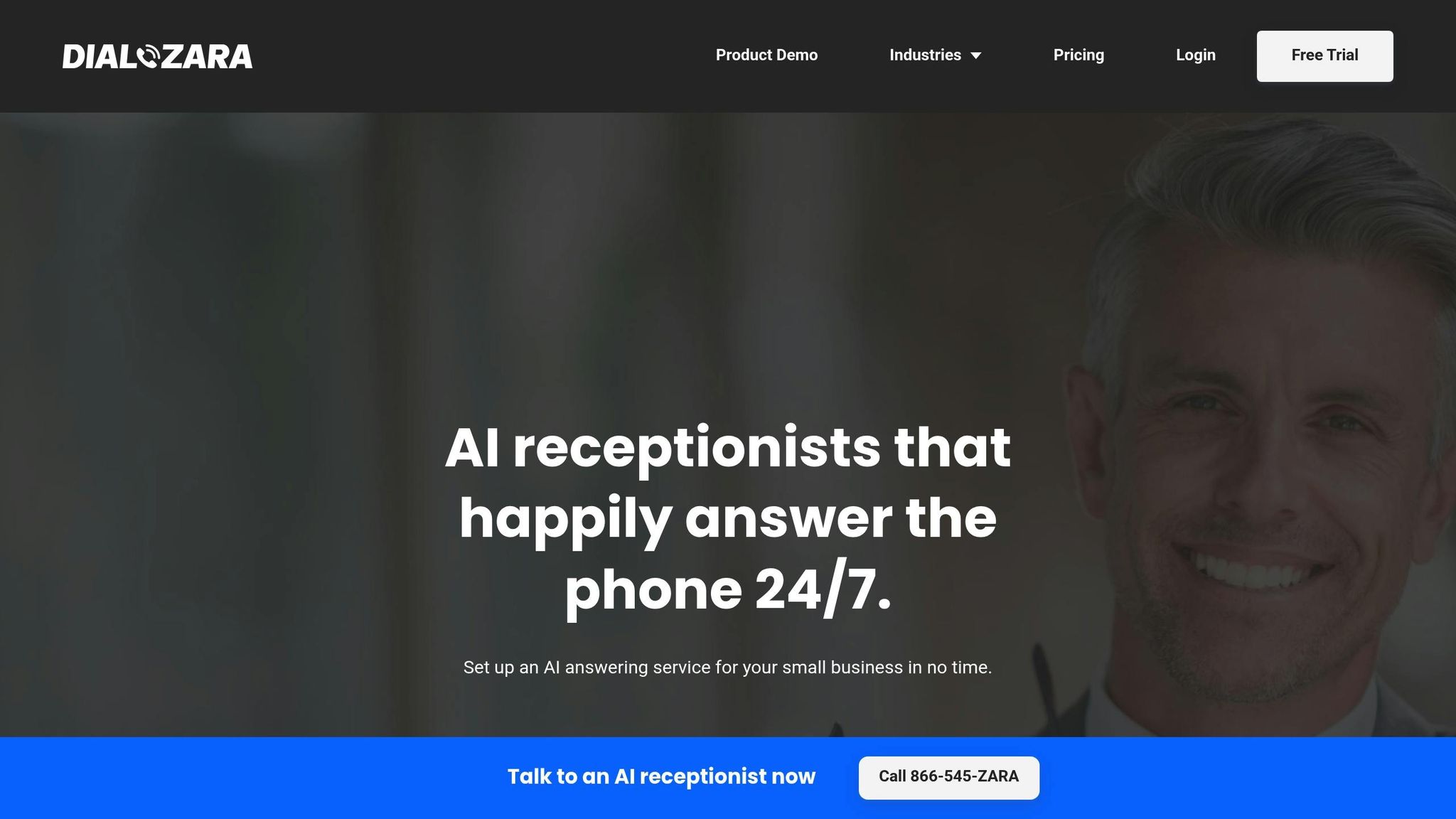
AI vs. Manual Customer Segmentation: Key Differences
Manual segmentation misses 62% of customer opportunities. AI processes data in real-time, cuts costs by 80%, and catches every interaction.

Written by
Adam Stewart
Key Points
- Process customer data instantly instead of waiting weeks for manual updates
- Cut segmentation costs by 80% while improving accuracy and consistency
- Identify micro-segments that manual methods miss entirely
- Answer more calls with real-time customer context and smart routing
AI-driven customer segmentation is faster, more accurate, and scales better than manual methods. Here's why:
- Speed: AI processes data in real time, while manual methods rely on slow, periodic updates.
- Accuracy: AI minimizes human error by using algorithms that continuously improve with new data.
- Scalability: AI handles large datasets effortlessly, identifying trends and micro-segments that manual approaches often miss.
- Cost Efficiency: AI reduces labor costs and operates continuously without needing more staff.
Quick Comparison
| Metric | AI Segmentation | Manual Segmentation |
|---|---|---|
| Processing Speed | Real-time updates, automatic adjustments | Batch processing, dependent on staff workload |
| Resource Use | Minimal supervision, scales without extra staff | Labor-intensive, limited to working hours |
| Consistency | Algorithm-driven, consistent results | Prone to human error and inconsistencies |
| Data Handling | Manages large datasets from multiple channels | Limited to fewer variables and channels |
| Cost Efficiency | Fixed costs, reduces manual labor | Costs rise with workload, requires ongoing training |
AI segmentation, like Dialzara’s system, enhances customer interactions by learning from real-time data, updating preferences instantly, and ensuring seamless experiences. It’s ideal for businesses looking to save time, reduce errors, and deliver personalized service.
2 Main Types of Customer Segmentation
How Manual Segmentation Works
Manual segmentation relies on analysts reviewing customer data and grouping individuals based on factors like purchase history, demographics, and basic behaviors. This approach requires periodic updates, which can be slow and labor-intensive. It often struggles to keep up with rapidly changing customer behaviors.
How AI Segmentation Works
AI-driven segmentation uses live data streams to continuously update customer groups in real time. This allows businesses to react instantly to evolving customer needs. For instance, Dialzara's AI analyzes incoming call interactions and adjusts categories based on new terms or client feedback. By automatically processing every touchpoint, it eliminates the need for manual updates while maintaining consistent accuracy and scalability.
Next, we'll look at how these methods compare in terms of speed, precision, and scalability.
AI vs Manual Segmentation: Main Differences
Speed and Resource Use
Manual segmentation requires analysts to comb through spreadsheets, update databases, and sort customers - a time-consuming process that delays actionable insights. In contrast, AI handles data streams in real time with minimal intervention. For example, Dialzara's AI analyzes calls and records details instantly, allowing teams to focus on strategic tasks instead of tedious data entry.
Error Rates and Results
Human-led segmentation often leads to inconsistencies and mistakes, such as misclassified segments or unreliable insights, due to data entry errors. AI, on the other hand, relies on standardized algorithms that ensure consistent processing. With every new data point, it refines its criteria, improving accuracy and removing the risk of human error.
Growth and Data Handling
As data volumes increase, manual segmentation struggles to keep up - updating segments becomes resource-heavy and often results in outdated insights. AI, however, scales effortlessly. Whether you're adding new customers or launching additional campaigns, it doesn’t require more staff. It can even identify micro-segments and emerging trends that manual methods might overlook, delivering richer insights automatically.
Next, we'll look at how real-time segmentation enhances live customer interactions.
Live Customer Experience Updates
AI segmentation offers a clear edge over manual methods by providing updates in real time. Unlike manual approaches, which rely on periodic reviews, AI works continuously to keep things current.
The downside of manual segmentation becomes clear when looking at customer service stats. For example, 60% of customers prefer calling local businesses after finding them online[1]. Yet, only 38% of these calls are answered[2], and just 20% of callers leave a voicemail[3]. These missed calls represent lost opportunities that can hurt both growth and customer satisfaction.
Dialzara’s AI steps in to bridge this gap by analyzing call patterns, customer preferences, and industry-specific language in real time. It learns and adapts with every interaction, ensuring a smoother experience.
Customer Derek Stroup shares: "I'm very pleased with your service. Your virtual receptionist has done a remarkable job, and I've recommended Dialzara to other business owners and colleagues because of my positive experience."
AI’s ability to adjust on the fly improves segmentation and enhances the overall customer experience.
It also brings practical benefits, including:
- Providing detailed call summaries with recordings and transcriptions after each call
- Learning new terminology and adapting to industry-specific language
- Updating customer preferences instantly
- Ensuring round-the-clock call answering
Up next, we’ll explore the AI segmentation features Dialzara has to offer.
sbb-itb-ef0082b
Dialzara's AI Customer Segmentation Features

Dialzara takes real-time segmentation to the next level with its AI-powered features, designed to enhance call management and customer interactions.
Dialzara's AI receptionist adjusts segments and customizes calls as they happen, making it easier for businesses to handle high call volumes while providing personalized experiences. Every call helps the AI learn new terms and workflows, improving its segmentation and streamlining call processes.
Customization and Learning
You can train the AI using your documents, URLs, and even past calls, ensuring responses align with your brand. The system evolves continuously, adapting to your business's specific communication style and customer needs.
Call Management
Dialzara simplifies call handling with features like:
- Automated call answering and transfers
- Detailed message summaries for accurate note-taking
- Call recordings and transcriptions for complete oversight
- Integration with over 5,000 business tools
Industry-Specific Features
Dialzara tailors its services to meet the needs of various industries:
- Healthcare: Schedule appointments and handle inquiries while staying compliant
- Legal: Manage client intake and gather essential details
- Real Estate: Oversee property inquiries and coordinate efficiently
- Financial Services: Route service calls securely, adhering to data protection standards
Setup is quick - create an account, select a voice, and forward your number. You’re ready to go in under 10 minutes.
"I've found Dialzara to be incredibly efficient and authentic."
- Bobby James Fournier
Check out how these features compare to traditional call management methods below.
Comparison Chart: AI vs. Manual Methods
Here's a quick breakdown of how AI and manual segmentation stack up:
| Metric | AI Segmentation | Manual Segmentation |
|---|---|---|
| Processing Speed | • Real-time updates and processing • Automatically adjusts to data size |
• Batch processing at intervals • Dependent on staff workload |
| Resource Requirements | • Operates continuously with minimal supervision • Scales without adding staff |
• Needs dedicated team members • Limited to working hours |
| Consistency | • Delivers consistent results through algorithms • Minimizes human bias |
• Results vary by individual • Susceptible to inconsistencies |
| Data Handling | • Manages large, diverse datasets • Integrates data from multiple channels |
• Focuses on fewer variables • Often limited to one channel |
| Cost Efficiency | • Predictable costs • Reduces reliance on manual labor |
• Costs increase with workload • Requires ongoing staff training |
| Flexibility | • Learns and updates dynamically • No manual rule changes needed |
• Rules updated manually • Requires periodic adjustments |
AI segmentation works seamlessly with call-handling systems, categorizing requests instantly, routing them accurately, and adapting as customer behaviors change. This eliminates the need for constant manual updates.
Next, let’s look at how to implement AI segmentation effectively.
Next Steps to Implement AI Segmentation with Dialzara
To get started with Dialzara's AI-powered segmentation, follow these simple steps:
- Set up your account: Enter your business and customer details to create your profile.
- Train the AI: Select a voice, choose a number, and upload your brand materials to personalize the system.
- Forward calls: Route your calls to Dialzara and access detailed summaries and analytics.
"One of the best return on investments I've ever made!" - Juan, AI answering service client and owner of AllyzAuto
Dialzara is quick to set up, learns your specific terminology, and provides round-the-clock coverage along with in-depth analytics. Need help? Expert support is available from 8 am to 8 pm MT to assist with setup and fine-tuning.
Summarize with AI
Related Posts
AI Email Segmentation: Guide & Best Practices
Learn about the benefits, types, and best practices of AI email segmentation. Discover how AI tools can improve email marketing campaigns and drive better results.
5 AI Tools to Reduce Customer Acquisition Cost in 2024
Discover the top 5 AI tools in 2024 to slash customer acquisition costs, enhance sales productivity, and drive business growth through automation and insights.
AI-Powered Customer Profiling: Boost Sales in 2024
Learn how AI-powered customer profiling can boost sales in 2024 by analyzing data, creating detailed customer profiles, and personalizing marketing strategies.
9 Ways AI Personalization Boosts Customer Engagement
Discover how AI personalization boosts customer engagement through personalized product recommendations, tailored content, predictive analytics, chatbots, and more.
